Jingyu Guo
Your AI Bosses Are Still Prejudiced: The Emergence of Stereotypes in LLM-Based Multi-Agent Systems
Aug 27, 2025Abstract:While stereotypes are well-documented in human social interactions, AI systems are often presumed to be less susceptible to such biases. Previous studies have focused on biases inherited from training data, but whether stereotypes can emerge spontaneously in AI agent interactions merits further exploration. Through a novel experimental framework simulating workplace interactions with neutral initial conditions, we investigate the emergence and evolution of stereotypes in LLM-based multi-agent systems. Our findings reveal that (1) LLM-Based AI agents develop stereotype-driven biases in their interactions despite beginning without predefined biases; (2) stereotype effects intensify with increased interaction rounds and decision-making power, particularly after introducing hierarchical structures; (3) these systems exhibit group effects analogous to human social behavior, including halo effects, confirmation bias, and role congruity; and (4) these stereotype patterns manifest consistently across different LLM architectures. Through comprehensive quantitative analysis, these findings suggest that stereotype formation in AI systems may arise as an emergent property of multi-agent interactions, rather than merely from training data biases. Our work underscores the need for future research to explore the underlying mechanisms of this phenomenon and develop strategies to mitigate its ethical impacts.
Efficient Self-Supervised Adaptation for Medical Image Analysis
Mar 24, 2025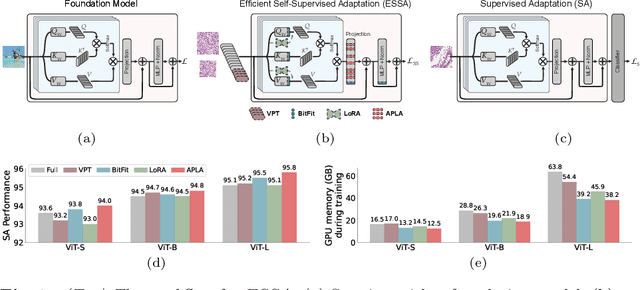
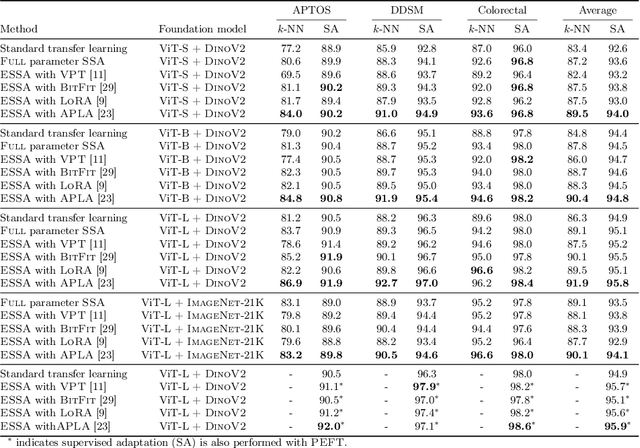


Abstract:Self-supervised adaptation (SSA) improves foundation model transfer to medical domains but is computationally prohibitive. Although parameter efficient fine-tuning methods such as LoRA have been explored for supervised adaptation, their effectiveness for SSA remains unknown. In this work, we introduce efficient self-supervised adaptation (ESSA), a framework that applies parameter-efficient fine-tuning techniques to SSA with the aim of reducing computational cost and improving adaptation performance. Among the methods tested, Attention Projection Layer Adaptation (APLA) sets a new state-of-the-art, consistently surpassing full-parameter SSA and supervised fine-tuning across diverse medical tasks, while reducing GPU memory by up to 40.1% and increasing training throughput by 25.2%, all while maintaining inference efficiency.
Hyper3D: Efficient 3D Representation via Hybrid Triplane and Octree Feature for Enhanced 3D Shape Variational Auto-Encoders
Mar 13, 2025Abstract:Recent 3D content generation pipelines often leverage Variational Autoencoders (VAEs) to encode shapes into compact latent representations, facilitating diffusion-based generation. Efficiently compressing 3D shapes while preserving intricate geometric details remains a key challenge. Existing 3D shape VAEs often employ uniform point sampling and 1D/2D latent representations, such as vector sets or triplanes, leading to significant geometric detail loss due to inadequate surface coverage and the absence of explicit 3D representations in the latent space. Although recent work explores 3D latent representations, their large scale hinders high-resolution encoding and efficient training. Given these challenges, we introduce Hyper3D, which enhances VAE reconstruction through efficient 3D representation that integrates hybrid triplane and octree features. First, we adopt an octree-based feature representation to embed mesh information into the network, mitigating the limitations of uniform point sampling in capturing geometric distributions along the mesh surface. Furthermore, we propose a hybrid latent space representation that integrates a high-resolution triplane with a low-resolution 3D grid. This design not only compensates for the lack of explicit 3D representations but also leverages a triplane to preserve high-resolution details. Experimental results demonstrate that Hyper3D outperforms traditional representations by reconstructing 3D shapes with higher fidelity and finer details, making it well-suited for 3D generation pipelines.
Random Token Fusion for Multi-View Medical Diagnosis
Oct 21, 2024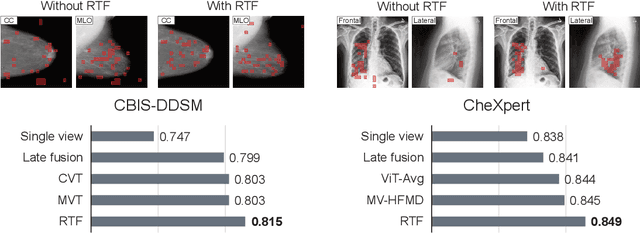

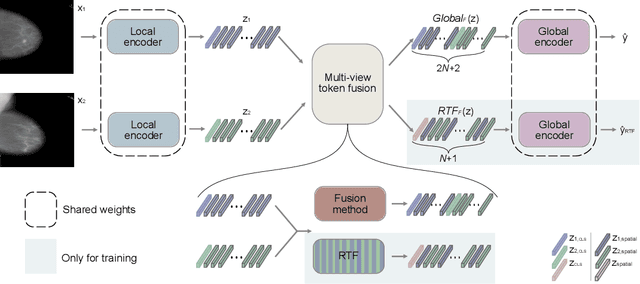

Abstract:In multi-view medical diagnosis, deep learning-based models often fuse information from different imaging perspectives to improve diagnostic performance. However, existing approaches are prone to overfitting and rely heavily on view-specific features, which can lead to trivial solutions. In this work, we introduce Random Token Fusion (RTF), a novel technique designed to enhance multi-view medical image analysis using vision transformers. By integrating randomness into the feature fusion process during training, RTF addresses the issue of overfitting and enhances the robustness and accuracy of diagnostic models without incurring any additional cost at inference. We validate our approach on standard mammography and chest X-ray benchmark datasets. Through extensive experiments, we demonstrate that RTF consistently improves the performance of existing fusion methods, paving the way for a new generation of multi-view medical foundation models.
MAMOC: MRI Motion Correction via Masked Autoencoding
May 23, 2024Abstract:The presence of motion artifacts in magnetic resonance imaging (MRI) scans poses a significant challenge, where even minor patient movements can lead to artifacts that may compromise the scan's utility. This paper introduces Masked Motion Correction (MAMOC), a novel method designed to address the issue of Retrospective Artifact Correction (RAC) in motion-affected MRI brain scans. MAMOC uses masked autoencoding self-supervision and test-time prediction to efficiently remove motion artifacts, producing state-of-the-art, native resolution scans. Until recently, realistic data to evaluate retrospective motion correction methods did not exist, motion artifacts had to be simulated. Leveraging the MR-ART dataset, this work is the first to evaluate motion correction in MRI scans using real motion data, showing the superiority of MAMOC to existing motion correction (MC) methods.
DOLPHINS: Dataset for Collaborative Perception enabled Harmonious and Interconnected Self-driving
Jul 15, 2022



Abstract:Vehicle-to-Everything (V2X) network has enabled collaborative perception in autonomous driving, which is a promising solution to the fundamental defect of stand-alone intelligence including blind zones and long-range perception. However, the lack of datasets has severely blocked the development of collaborative perception algorithms. In this work, we release DOLPHINS: Dataset for cOllaborative Perception enabled Harmonious and INterconnected Self-driving, as a new simulated large-scale various-scenario multi-view multi-modality autonomous driving dataset, which provides a ground-breaking benchmark platform for interconnected autonomous driving. DOLPHINS outperforms current datasets in six dimensions: temporally-aligned images and point clouds from both vehicles and Road Side Units (RSUs) enabling both Vehicle-to-Vehicle (V2V) and Vehicle-to-Infrastructure (V2I) based collaborative perception; 6 typical scenarios with dynamic weather conditions make the most various interconnected autonomous driving dataset; meticulously selected viewpoints providing full coverage of the key areas and every object; 42376 frames and 292549 objects, as well as the corresponding 3D annotations, geo-positions, and calibrations, compose the largest dataset for collaborative perception; Full-HD images and 64-line LiDARs construct high-resolution data with sufficient details; well-organized APIs and open-source codes ensure the extensibility of DOLPHINS. We also construct a benchmark of 2D detection, 3D detection, and multi-view collaborative perception tasks on DOLPHINS. The experiment results show that the raw-level fusion scheme through V2X communication can help to improve the precision as well as to reduce the necessity of expensive LiDAR equipment on vehicles when RSUs exist, which may accelerate the popularity of interconnected self-driving vehicles. DOLPHINS is now available on https://dolphins-dataset.net/.
NTIRE 2021 Challenge on Perceptual Image Quality Assessment
May 11, 2021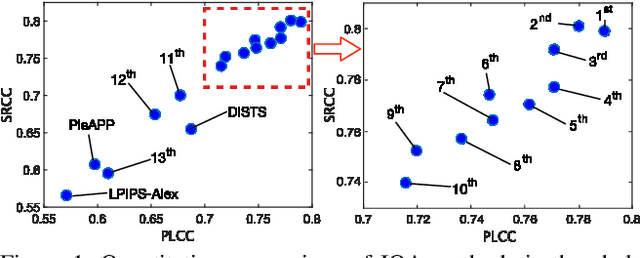
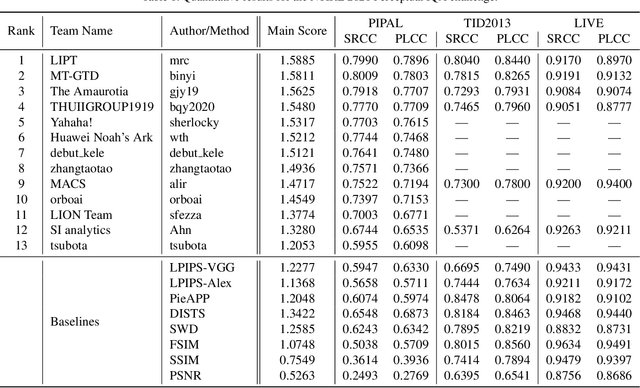
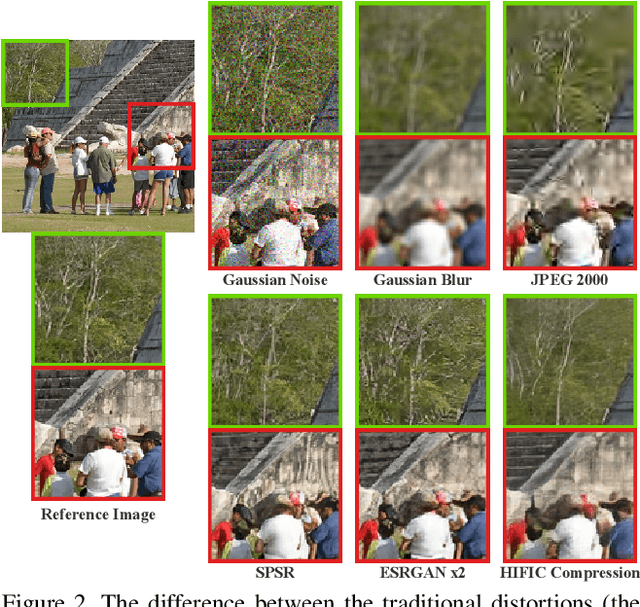
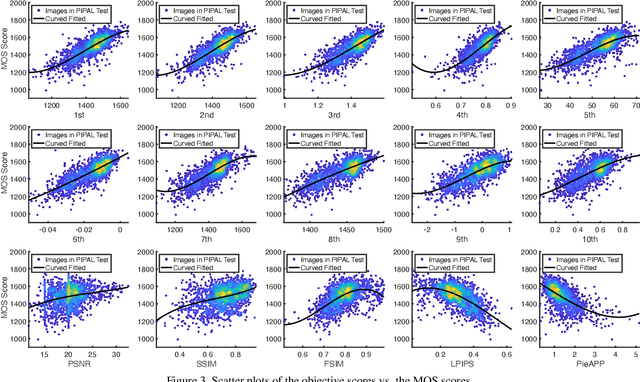
Abstract:This paper reports on the NTIRE 2021 challenge on perceptual image quality assessment (IQA), held in conjunction with the New Trends in Image Restoration and Enhancement workshop (NTIRE) workshop at CVPR 2021. As a new type of image processing technology, perceptual image processing algorithms based on Generative Adversarial Networks (GAN) have produced images with more realistic textures. These output images have completely different characteristics from traditional distortions, thus pose a new challenge for IQA methods to evaluate their visual quality. In comparison with previous IQA challenges, the training and testing datasets in this challenge include the outputs of perceptual image processing algorithms and the corresponding subjective scores. Thus they can be used to develop and evaluate IQA methods on GAN-based distortions. The challenge has 270 registered participants in total. In the final testing stage, 13 participating teams submitted their models and fact sheets. Almost all of them have achieved much better results than existing IQA methods, while the winning method can demonstrate state-of-the-art performance.
Subjective Opinions Matter: Controllable Image Quality Assessment Using Pseudo Reference Images
May 06, 2021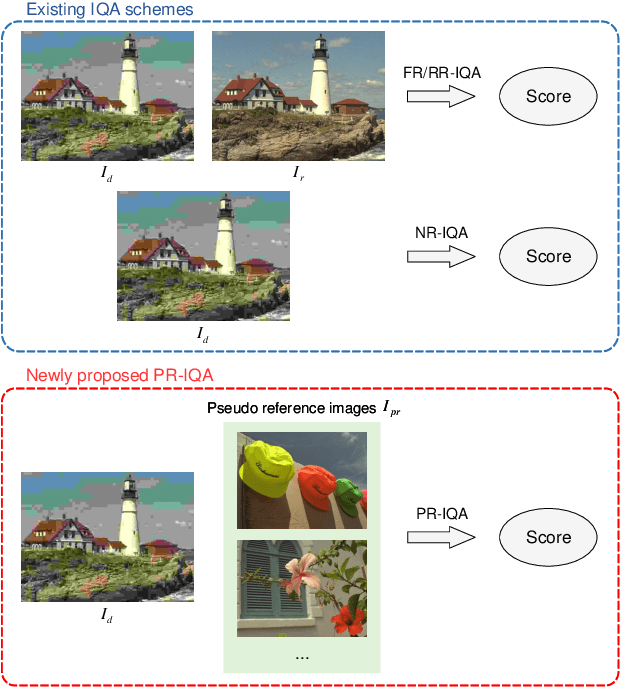



Abstract:Recently, image quality assessment (IQA) has achieved remarkable progress with the success of deep learning. However, existing IQA methods are practically troublesome. With the strict pre-condition of full-reference (FR) methods limiting its application in real scenarios, the no-reference (NR) scheme is also inconvenient due to its unsatisfying performance and the lack of flexibility or controllability. In this paper, we aim to bridge the gap between FR and NR-IQA and introduce a brand new scheme, namely pseudo-reference image quality assessment (PR-IQA), by introducing pseudo reference images. As the first implementation of PR-IQA, we propose a novel baseline, i.e., Unpaired-IQA, from the perspective of subjective opinion-aware IQA. A self-adaptive feature fusion (SAFF) module is well-designed for the unpaired features in PR-IQA, with which the model can extract quality-discriminative features from distorted images and content variability-robust features from pseudo reference ones, respectively. Extensive experiments demonstrate that the proposed model outperforms the state-of-the-art NR-IQA methods, verifying the effectiveness of PR-IQA and demonstrating that a user-friendly, controllable IQA is feasible and successfully realized.
NTIRE 2021 Challenge on Quality Enhancement of Compressed Video: Methods and Results
May 02, 2021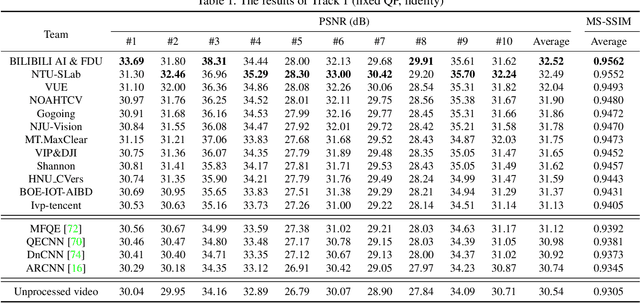
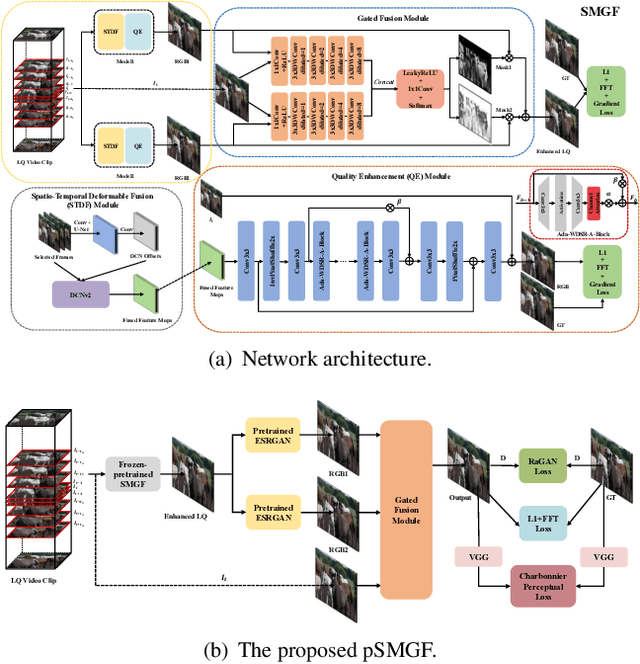

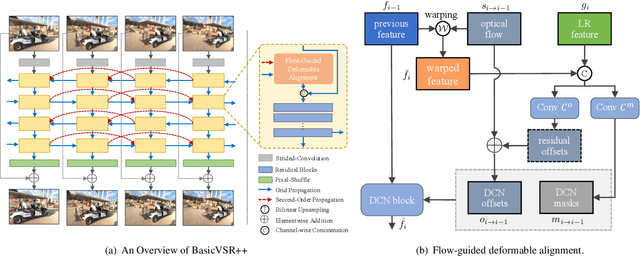
Abstract:This paper reviews the first NTIRE challenge on quality enhancement of compressed video, with a focus on the proposed methods and results. In this challenge, the new Large-scale Diverse Video (LDV) dataset is employed. The challenge has three tracks. Tracks 1 and 2 aim at enhancing the videos compressed by HEVC at a fixed QP, while Track 3 is designed for enhancing the videos compressed by x265 at a fixed bit-rate. Besides, the quality enhancement of Tracks 1 and 3 targets at improving the fidelity (PSNR), and Track 2 targets at enhancing the perceptual quality. The three tracks totally attract 482 registrations. In the test phase, 12 teams, 8 teams and 11 teams submitted the final results of Tracks 1, 2 and 3, respectively. The proposed methods and solutions gauge the state-of-the-art of video quality enhancement. The homepage of the challenge: https://github.com/RenYang-home/NTIRE21_VEnh
 Add to Chrome
Add to Chrome Add to Firefox
Add to Firefox Add to Edge
Add to Edge